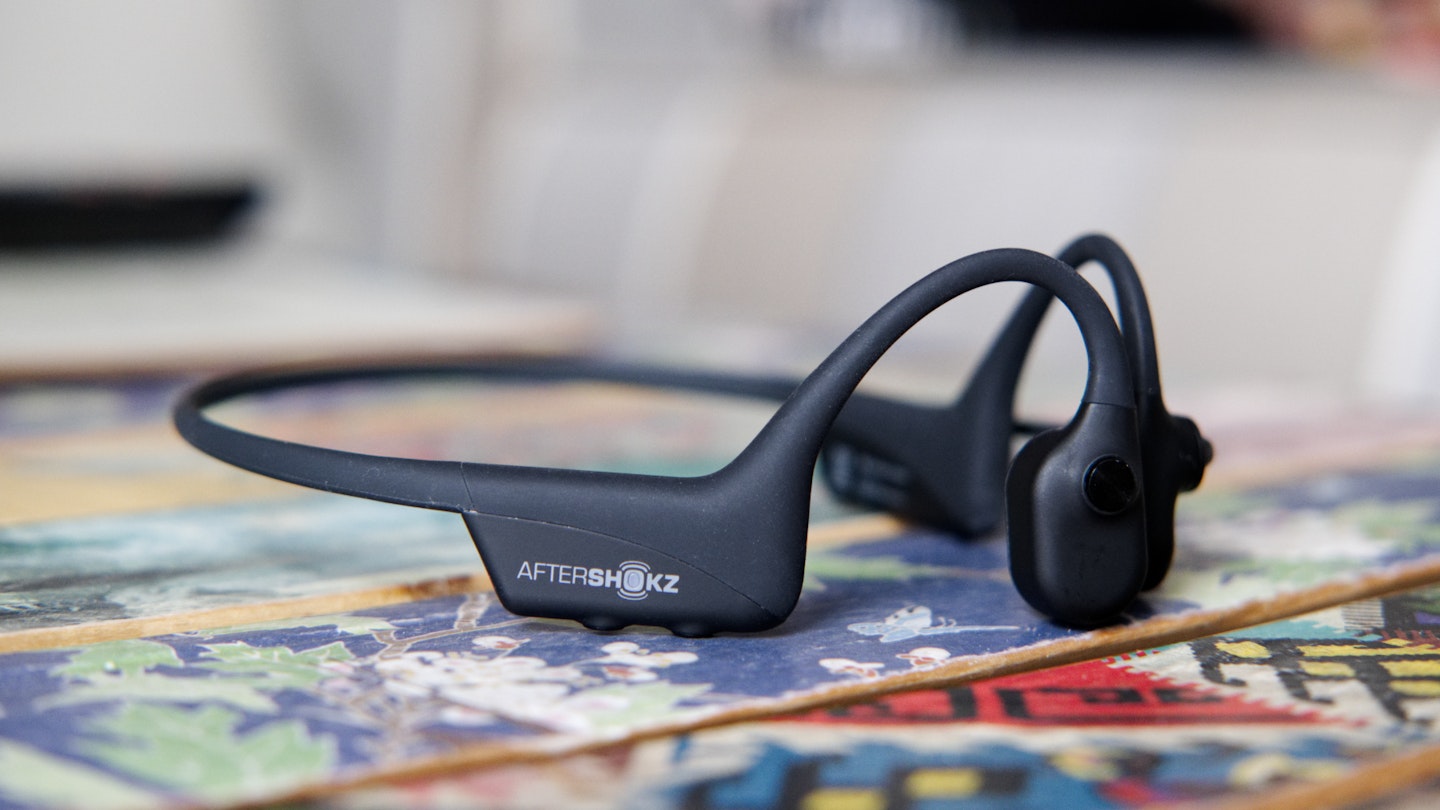The SHOKZ OpenComm Headset (formerly AfterShokz) uses bone conduction technology, allowing the wearer to stay alert to their surroundings while on a call or listening to music. Unlike most of the best headphones, to achieve the open-ear design, the audio drivers rest on the face, just in front of the ear and tragus.
Initially, the experience is odd, but soon the situational awareness gained speaks for itself. The open-ear design allows you to hear colleagues, the doorbell and traffic, and the audio quality delivered by bone conduction drivers is crisp and plenty loud. In between meetings, the OpenComm can play music with playback commands, complete with EQ presets.
The microphone is excellent at picking up the wearer’s voice clearly, with noise-cancelling working to reduce the effect of background noise in busy environments. When not in use, it can swivel up out of the way.
The battery life carries 16 hours of talk time and recharges fully in one hour. SHOKZ's choice to use a magnetic charging cable is slightly baffling, as USB-C would’ve allowed for the use of readily available smartphone cables. The Bluetooth 5.0 connection is reliable and has NFC for easy setup.
The SHOKZ OpenComm has excellent build quality. At 33g with a wrap-around design, the headset offers all-day comfort, and the IP55 rating gives protection from bad weather and coffee spills. The function and volume buttons are tactile and responsive, and onboard controls include basic phone operation quick commands, quick redial of last called number and answer call waiting.
Score: 4.5/5
Pros
- Good audio with an open-ear design
- Precise noise-cancelling microphone
- Extremely comfortable
Cons
- Not USB-C
- Some may take a while to acclimate to bone conduction
| Wireless: | Bluetooth 5.0, NFC |
| Battery: | 16h talk time, 8h music, 14 day standby |
| Microphone: | Boom microphone, noise-cancelling |

What’s to love about the SHOKZ OpenComm Headset?
The best thing about the SHOKZ OpenComm is that it performs as it should. The audio and the mic are clear, the Bluetooth connection is strong, and the battery life will keep you talking throughout the day.
I really enjoy the open-ear design of the SHOKZ OpenComm and find it a compelling benefit of the OpenComm headset; whether working outdoors, from home or in the office, hearing your surroundings while on a call is very convenient. The design also has the benefit of keeping your ears in the open air and free from pressure. In turn, this helps prevent the grossness of sweaty ears - a curse seemingly unavoidable after spending a day on calls with over-ear headsets and headphones.
The headset is also incredibly light and comfortable. Having tested bone-conduction headphones before with the AfterShokz OpenMove, I worried that the boom microphone would be cumbersome. Happily, this isn’t the case at all. Both the SHOKZ OpenComm and OpenMove are the most comfortable headsets I’ve tried.

What’s okay?
By bone conduction standards, the audio is clear, well-rounded and vibrant. In particular, voices come across well, thanks to the SHOKZ OpenComm’s strong mid-range frequency performance. However, bone conduction technology results in a thinner sound with so-so bass when compared with over-ear and in-ear headphones and headsets; this is most evident when listening to music. It’s all about making a trade-off - you gain situational awareness and sacrifice some audio quality.

Any negatives?
The SHOKZ OpenComm uses a magnetic charging cable. It works well and charges the battery quickly, but it’s a very uncommon type of cable. USB-C would have been more appealing while still facilitating rapid charging.
A USB-C connection would allow users to charge the OpenComm with their smartphone or laptop cable. For me, such compatibility would have meant I didn’t need to add yet another wire to my desk. I’m sure that AfterShockz has a reason for the decision, but it seems particularly strange given that the OpenMove does use USB-C.
How we tested the SHOKZ OpenComm Headset
It’s the year 2021, so I’m working from home. Microsoft Teams and Zoom video calls are commonplace. I’ve been using the headset on these calls, connecting to an Apple Mac via Bluetooth. I have also tested the OpenComm for phone calls on the Samsung Galaxy S9+ and Apple iPhone 12 Mini.
What to read next:
Aftershokz OpenMove Bone Conduction Headphones Review: Good vibrations

